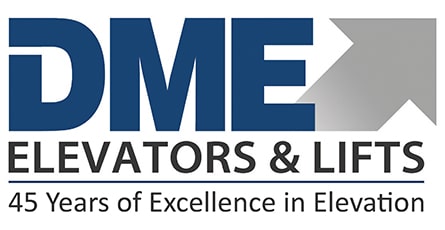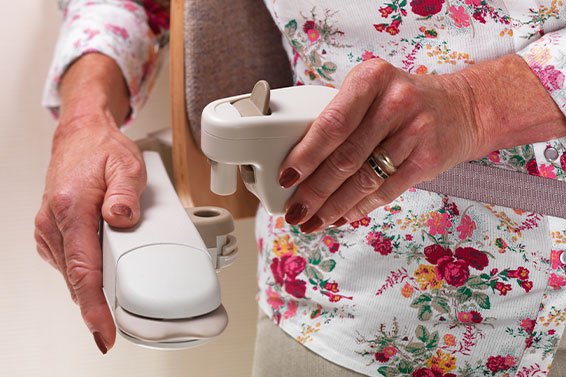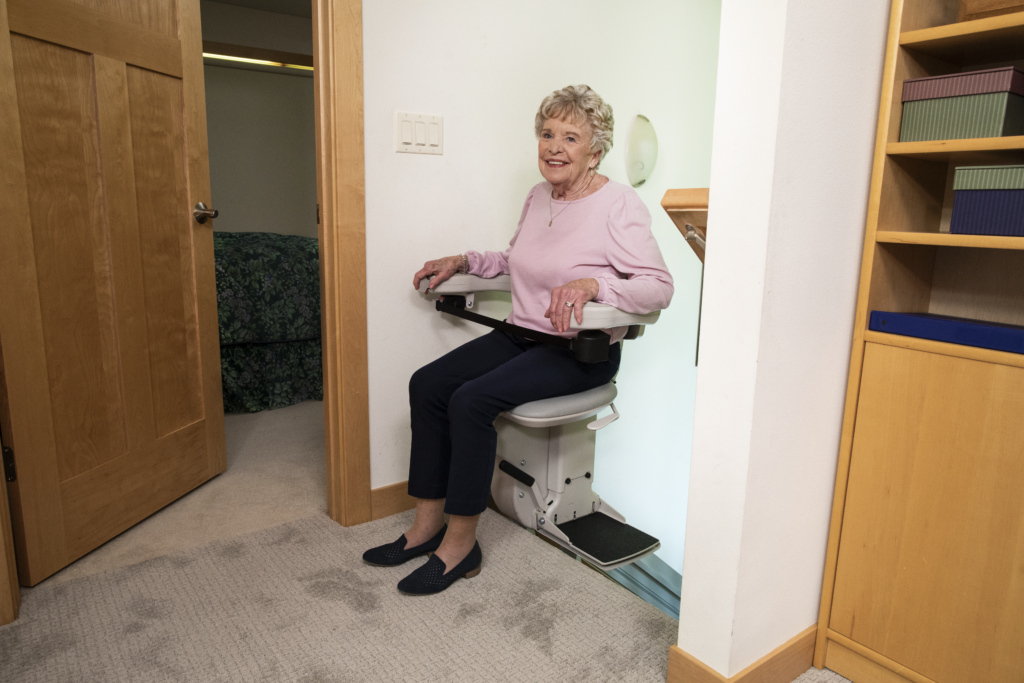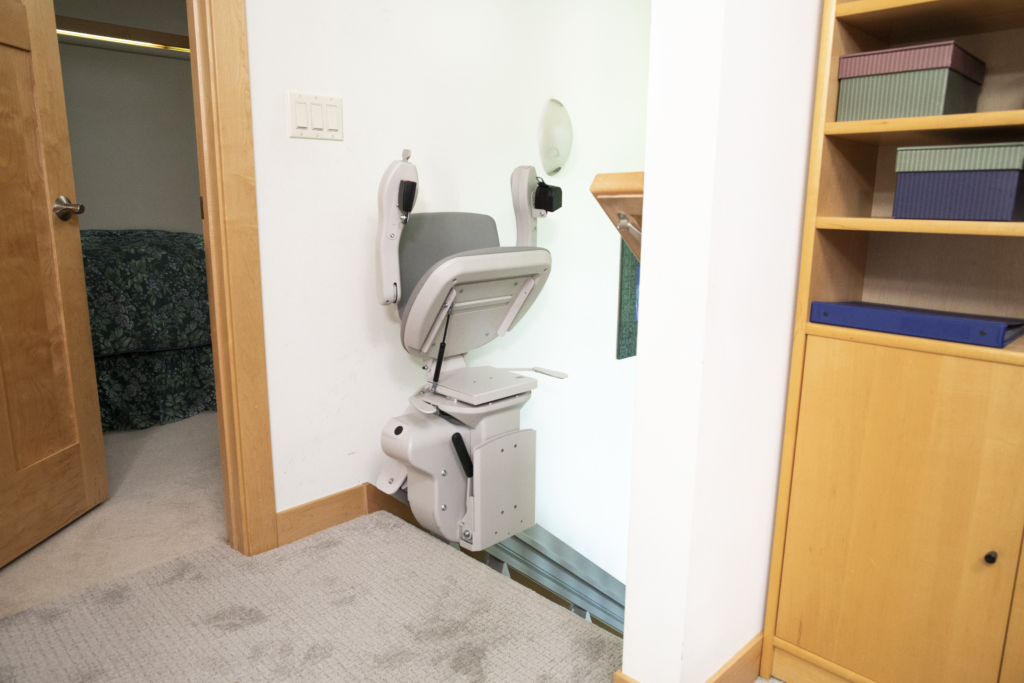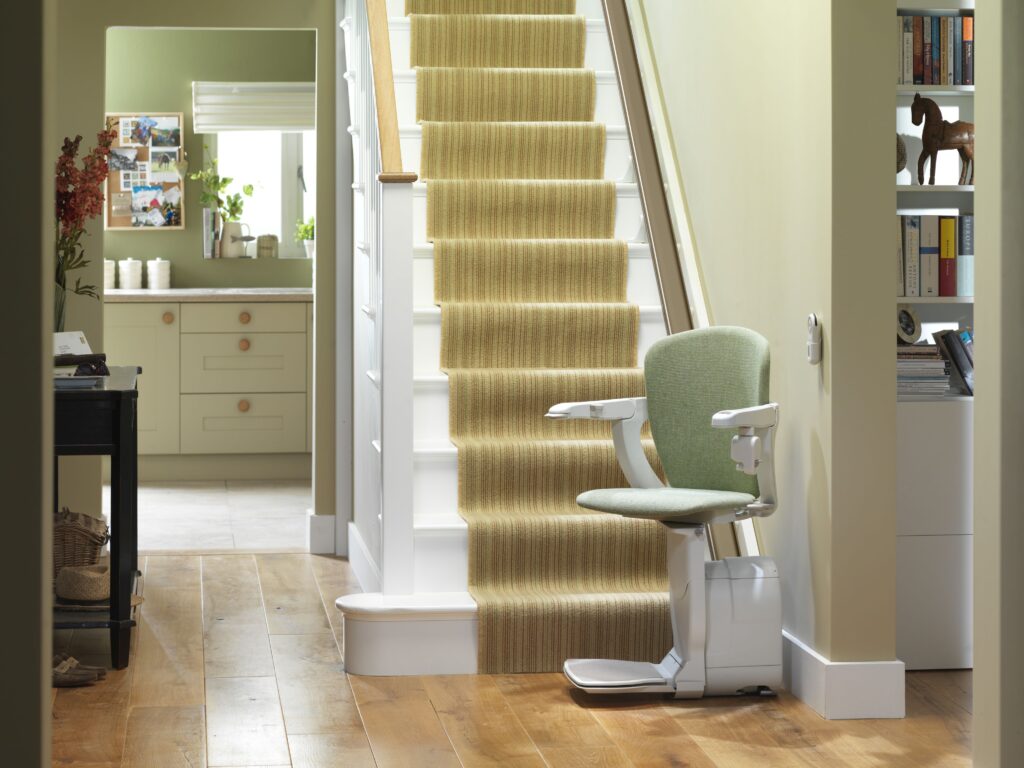Thinking about getting a stair lift installed in your home but not sure if it is the right fit for your needs? These lifts can not only give you more independence around your home, but they can also keep you safer if you struggle with any sort of mobility issues. Stairs can be a challenge and even dangerous if you have limited mobility, and chair lifts are designed to make stairs easier for you to navigate. In this post we will go over the mechanisms of a stairlift, how they work, the types of lifts available, and the benefits of having one installed in your home.
Key Components of a Stair Lift
The first step in answering how a stairlift works is to know the basic parts or components of a chair lift. While the specific style and design of a stair lift are dependent on the manufacturer, they all have the same basic components.
These components include:
- Track or Rail: The track or rail system of a stair lift works as the guide for where the chair will travel, similar to train tracks. This system is typically a geared strip that grips the chair and propels it forward up or down the track. The track or rail is fixed to the treads of your staircase.
- Motor: The motor is found at the base of the chair and works to provide the power needed to move the chair up and down the track.
- Seat and Safety Features: The seat of the stair lift is where the user will sit and ride the stair lift. Depending on the manufacturer, the seat may swivel or turn at the top and bottom of your staircase for an easier transfer out of the chair. Some have power swivel options for ease of use. The seat of the chair also includes a footrest that can fold out of the way along with the seat itself.
- Call/Send Controls: The remotes to call or send the chair are typically installed at the top and bottom of your staircase so that the user can safely call the chair to them or send it away if it is not needed.
- Battery and Charger: The battery of the chair lift is found in the base of the chair alongside the motor. It is what powers the whole system, and can last years before it needs to be replaced. The battery will recharge by parking the lift at a charging point at the top or bottom of the staircase.
How Stair Lifts Operate
Regardless of the manufacturer, every chair lift should have basic operating procedures that make sure that the chair works properly and the user is kept safe throughout the process. For chairs provided by DME Elevators and Lifts, the basic steps of how to operate your chair lift are as follows:
- Getting on and off the stair lift: Users will fold down the chair from its stored position before getting on. Depending on the model of the chair, it may have either a manual swivel or a powered swivel option, this is a great solution for users with more mobility needs. Make sure the chair is at a complete stop before getting on or off of it.
- Using the seat belt: Once in the chair, users should then secure the seat belt found on the chair. This seat belt keeps the user secure in the chair while it is moving and can prevent unwanted falls.
- Activating the lift: After securing the seat belt, users then use either the controls found at the top or bottom of the stairs or the controls in the armrest, to activate the chair and start moving.
- Using the controls: The controls found at the top and bottom of the stairs allow the user to decide whether they want to call the chair towards them or send it away. This way, users can use the chair to also send items they do not want to carry. This would make moving groceries or a basket of laundry much safer.
- Safety stops and slowing down: Our chairs have a sensor at the base of the chair that will cause the chair to come to a gentle but immediate stop if there are any obstacles on the stairs.
Safety Features and Considerations
One thing to keep in mind when choosing a chair lift that works for you is the safety features built into the chair. A well-designed chair is built to keep the user safe and the controls easy to navigate.
A few safety features to keep an eye out for can include safety panels at any possible pinch point on the lift, a key switch to prevent accidental use of the chair from say a toddler or pet, and automatic slow-down and final limit switches at either end of the track for a controlled stop. There should also be some form of emergency stop for the chair in the event there is an obstacle on the stairs or the chair needs to come to a sudden stop midway up the stairs.
It is also recommended that users have regular maintenance and checks performed on their chair lift by a DME Elevators & Lifts technician. It is important to leave the installation and maintenance of your chair to the professionals, as they are trained and equipped to safely perform any repairs or inspections while maintaining the integrity of the chair. A professional installation means fewer issues down the road and a chair that will last for years to come. If not installed by a professional this will in most cases void your warranty, and many new chair lifts come with a valuable lifetime warranty on their motor, the critical component of your lift.
Types of Stair Lifts
Multiple styles of staircase have different requirements for a chair lift to function properly and provide the mobility support you need. DME Elevators & Lifts has chair lift options to fit your specific needs, including straight stair lifts, curved stair lifts, and even outdoor stair lifts. Each stairlift option has unique features that make it more suitable for different locations.
For example, straight stair lifts are a great option for homes with a single straight staircase without any curves or turns. Another option can be to have two straight chair lifts on stairs with a landing in the middle, where the user can transfer from one chair to the other to make it up the stairs.
Curved stair lifts allow for a single chair to make any up a set of stairs with a landing or curve to them. If you have any pie-shaped stairs you would need to install a curved stair lift.
Lastly, we offer chair lifts for outdoor stairs that are built to last outside and work under any weather conditions. Come rain, sleet, or shine, these outdoor stair lifts are built to survive the elements.
Benefits of Using a Stair Lift
If you are hesitant to get a stair lift for your home, there are benefits to owning one that works for the user as well as any caregivers in the home. For the user, they can experience enhanced mobility and independence in their home, able to confidently navigate the stairs safely and without the aid of another person. Chair lifts can be a safer option for navigating the stairs for users with mobility issues or instability on their feet.
Not only do stair lifts provide more independence and mobility for the user, but they also provide practical benefits for caregivers. Caregivers will no longer need to supervise or assist their loved one up and down the stairs as hands-on as before.
Improve Mobility and Independence with Stair Lifts
Having a stair lift in your home can give you back your independence and keep you safer in your home. DME Elevators & Lifts has stair lift options available for any style of staircase, in any part of your home.
Our chairs are built to last and keep you safe, with built-in safety features and easy installation. Looking to install a chair lift in your home? Contact us online or schedule an appointment for a quote! We are here to serve the Illinois, Indiana, and Wisconsin areas.
